What Happened to Jungian Therapy After Jung Died?
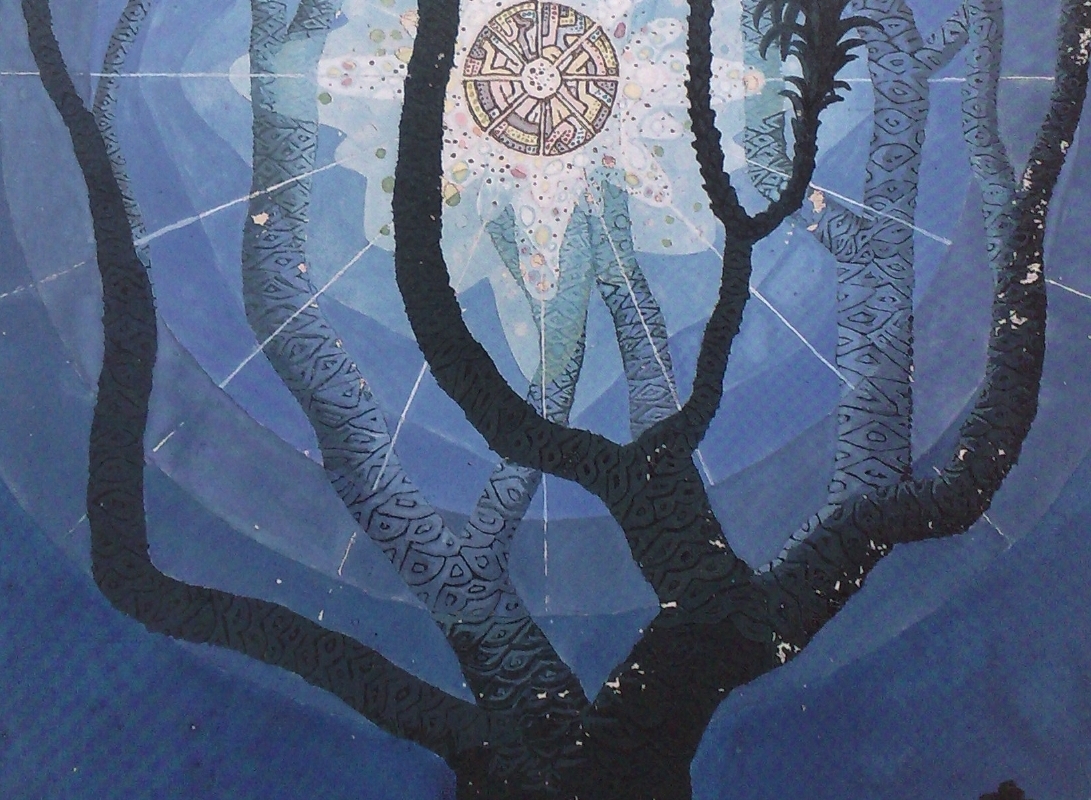
Carl Gustav Jung, the founder of analytical psychology, left an indelible mark on the field of psychotherapy. His groundbreaking ideas about the collective unconscious, archetypes, and the individuation process have influenced generations of therapists and continue to shape our understanding of the human psyche. However, in the years following Jung’s death in 1961, the landscape of Jungian psychotherapy began to shift in ways that some argue strayed from the core principles of his approach.
In the decades after Jung’s passing, many Jungian institutes and practitioners increasingly emphasized cognitive and analytical approaches to psychotherapy. While this intellectual exploration of Jung’s ideas contributed to the growth and development of analytical psychology, it also led to a growing concern among some Jungian therapists that the field was losing touch with the intuitive, subjective, and experiential elements that were central to Jung’s therapeutic approach.
Jung himself was a strong advocate for the importance of direct experience and the limitations of purely intellectual understanding in psychotherapy. In his autobiography, “Memories, Dreams, Reflections,” he wrote:
“Every individual is an exception to the rule. Hence it is impossible to give a general description of the development of the psyche. It is a great mistake to believe that we know something just because we have a scientific explanation for it. We know nothing until we have had a direct experience of it.”
This quote encapsulates Jung’s emphasis on the primacy of subjective experience and his wariness of rigid theoretical constructs that can obscure the unique nature of each individual’s psychic journey.
As Jungian institutes became increasingly focused on cognitive and analytical approaches, a new generation of post-Jungian therapists began to emerge. These pioneers sought to reconnect with the somatic and experiential roots of Jungian psychology, drawing inspiration from Jung’s own use of active imagination, dream work, and other experiential techniques, while also incorporating insights from fields such as body psychotherapy, humanistic psychology, and neuroscience.
This article will explore the evolution of post-Jungian psychotherapy, tracing its development from the increasingly cognitive and analytical approaches that characterized many Jungian institutes in the latter half of the 20th century to the emergence of new somatic and experiential models that sought to re-integrate the body, emotions, and subjective experience into the therapeutic process. We will examine the key figures and approaches that have shaped this transformation, including James Hillman’s archetypal psychology, Arnold Mindell’s process-oriented psychology, Pat Ogden’s sensorimotor psychotherapy, and Diana Fosha’s accelerated experiential dynamic psychotherapy (AEDP).
Through this exploration, we will highlight the dangers of what some have called “Jungian literalism” – an over-reliance on intellectual analysis and theoretical constructs at the expense of the intuitive, subjective, and experiential dimensions of psychotherapy. We will also showcase the innovations and contributions of post-Jungian somatic and experiential approaches, which have brought a renewed focus on the therapeutic relationship, the role of the body in healing, and the importance of staying present with the client’s immediate experience.
As we trace this evolution, we will gain a deeper appreciation for the richness and diversity of post-Jungian psychotherapy, and the ways in which it continues to evolve and adapt to meet the changing needs of clients in the 21st century. By embracing the somatic, experiential, and relational dimensions of healing, post-Jungian therapists are charting new paths forward, while also staying true to the core principles that have made Jungian psychology such an enduring and transformative force in the field of psychotherapy.
The Rise of Cognitive and Analytical Approaches in Jungian Psychotherapy
In the years following Jung’s death, many Jungian institutes and practitioners increasingly focused on cognitive and analytical approaches to psychotherapy. This shift was driven in part by a desire to systematize and codify Jung’s ideas, making them more accessible and applicable to a wider range of clinical settings and populations.
The rise of ego psychology and object relations theory in the broader field of psychoanalysis also influenced this trend, as Jungian analysts sought to integrate these perspectives into their understanding of the psyche. This led to a greater emphasis on the role of the ego in psychic functioning, and a focus on analyzing and interpreting the symbolic content of dreams, fantasies, and other unconscious material.
While these developments contributed to the growth and sophistication of Jungian theory, they also led to a growing concern among some Jungian therapists that the field was becoming too intellectualized and removed from the lived experience of clients. Critics argued that an over-reliance on theoretical constructs and analytical interpretation could lead to a kind of “Jungian literalism,” in which the unique, subjective experience of the individual was subordinated to a pre-determined set of archetypal patterns and symbolic meanings.
Jung himself was wary of this tendency towards orthodoxy and literalism in psychotherapy. He famously declared, “I am glad I am not a Jungian,” emphasizing the importance of individual exploration and subjective experience over rigid adherence to theoretical constructs. Jung saw orthodoxy as a tree that dies and must be cleared away to allow new growth to emerge.
In “Memories, Dreams, Reflections,” Jung wrote:
“A theory, even a very good one, only has the value of a working hypothesis. It should not be treated as an eternal truth. Psychology has no room for tenets of faith; we are concerned with experience, not with doctrines.”
This quote highlights Jung’s emphasis on the primacy of direct experience in psychotherapy, and his recognition that even the most compelling theories are ultimately provisional and subject to revision in light of new evidence and insights.
The Emergence of Post-Jungian Somatic and Experiential Approaches
As concerns grew about the increasingly cognitive and analytical focus of many Jungian institutes, a new generation of post-Jungian therapists began to explore ways to re-integrate somatic and experiential elements into their work. These pioneers drew inspiration from Jung’s own use of active imagination, dream work, and other experiential techniques, while also incorporating insights from other fields such as body psychotherapy, humanistic psychology, and neuroscience.
Some of the key figures and approaches in this movement include:
-
James Hillman and Archetypal Psychology
James Hillman was a prominent post-Jungian thinker who developed the field of archetypal psychology. Hillman’s approach emphasized the importance of imagination, metaphor, and the “poetic basis of mind.” He challenged traditional notions of the self and argued for a more fluid, imaginal approach to psychotherapy.
Hillman critiqued what he saw as the overly literal and reductionist tendencies of some Jungian analysts, who sought to interpret every dream symbol or fantasy image in terms of a fixed set of archetypal meanings. Instead, Hillman advocated for a more open-ended, exploratory approach that honored the multivalent, ambiguous nature of psychic experience.
In his book “Re-Visioning Psychology,” Hillman wrote:
“Literalism prevents mystery by narrowing the multiple ambiguity of meanings into one definition. We learn to see the manifold senses, to hear the metaphorical background, to smell out the archetypal… We learn to live without definitions, with ambiguity of various meanings. We learn that ambiguity and ambivalence are an aspect of maturity.”
Hillman’s emphasis on the imaginative, metaphorical dimensions of psychic life has had a profound influence on post-Jungian psychotherapy, encouraging therapists to approach their work with a greater sense of play, creativity, and openness to the unexpected.
-
Arnold Mindell and Process-Oriented Psychology
Arnold Mindell is another key figure in the development of post-Jungian somatic and experiential approaches. Mindell’s process-oriented psychology (also known as process work) explores the meaning behind experiences, including body symptoms, relationship conflicts, and dreams. He emphasizes the importance of following the client’s process and working with the “dreaming body.”
Mindell draws on a wide range of influences, including Jungian psychology, Taoism, quantum physics, and systems theory, to develop a holistic approach to psychotherapy that engages the whole person – body, mind, and spirit. He sees the body as a source of wisdom and insight, and encourages clients to pay attention to subtle sensations, impulses, and movements that arise in the therapeutic process.
In his book “Working with the Dreaming Body,” Mindell writes:
“The dreaming body is the part of us that is always dreaming, even during the day. It is the source of our night-time dreams, and it also speaks to us through body symptoms, relationship conflicts, and synchronicities. When we learn to listen to the dreaming body, we tap into a deep well of wisdom and creativity that can guide us in our personal and professional lives.”
Mindell’s process-oriented approach has had a significant impact on post-Jungian psychotherapy, encouraging therapists to attend to the non-verbal, somatic dimensions of the therapeutic encounter, and to trust in the inherent wisdom of the psyche to guide the healing process.
-
Pat Ogden and Sensorimotor Psychotherapy
Pat Ogden is a leading figure in the field of somatic psychology, and the founder of sensorimotor psychotherapy. Ogden’s approach integrates principles from cognitive and dynamic therapies with somatic interventions, focusing on the role of the body in processing trauma and promoting healing.
Sensorimotor psychotherapy draws on research from neuroscience, attachment theory, and body-oriented therapies to develop a comprehensive approach to trauma treatment. Ogden emphasizes the importance of working with the client’s “window of tolerance” – the range of arousal within which they can effectively process and integrate traumatic experiences.
In her book “Trauma and the Body: A Sensorimotor Approach to Psychotherapy,” Ogden writes:
“The body is the container of one’s experience of the self, one’s sense of identity, and how one manages life. The body is also the vehicle for emotion, the mode of expressing both the joys and sorrows of life. In order for the self to be cohesively organized and an individual to have a stable identity, the body must be included in therapy.”
Ogden’s sensorimotor approach has had a profound influence on post-Jungian psychotherapy, highlighting the centrality of the body in the healing process, and providing therapists with a range of tools and techniques for working with trauma and attachment wounds.
-
Diana Fosha and Accelerated Experiential Dynamic Psychotherapy (AEDP)
Diana Fosha is the founder of accelerated experiential dynamic psychotherapy (AEDP), a post-Jungian approach that emphasizes the importance of the therapeutic relationship and emotional processing in psychotherapy. AEDP draws on attachment theory, affective neuroscience, and experiential therapies to create a powerful, transformative approach to healing.
Fosha sees the therapeutic relationship as the key to unlocking the client’s innate healing capacities. She emphasizes the importance of creating a safe, supportive, and affirming environment in which clients can explore their deepest feelings and experiences. AEDP therapists use a range of experiential techniques, such as focusing, chair work, and imagery, to help clients access and process difficult emotions.
In her book “The Transforming Power of Affect: A Model for Accelerated Change,” Fosha writes:
“The therapeutic relationship is the crucible in which the work of therapy takes place. It is the safe haven in which the client can explore the most painful and frightening aspects of their experience, and the secure base from which they can venture out into the world with a new sense of confidence and resilience.”
Fosha’s AEDP approach has had a significant impact on post-Jungian psychotherapy, highlighting the central role of the therapeutic relationship in the healing process, and providing therapists with a powerful set of tools for working with emotional trauma and attachment wounds.
Innovations in Post-Jungian Psychotherapy
The emergence of post-Jungian somatic and experiential approaches has led to a range of innovations in psychotherapy, including:
Emphasis on the therapeutic relationship:
Many post-Jungian approaches prioritize the quality of the therapeutic relationship, recognizing its central role in facilitating healing and growth. Therapists focus on creating a safe, supportive, and empathic environment in which clients can explore their deepest feelings and experiences.
Attention to the body:
By incorporating somatic awareness and interventions, post-Jungian therapies help clients connect with their bodily experiences and process trauma and emotional distress on a deeper level. Therapists use techniques such as focusing, breathwork, and movement to engage the body in the healing process.
Integration of multiple modalities:
Post-Jungian approaches often draw on a range of theoretical backgrounds, integrating insights from attachment theory, neuroscience, and humanistic psychology to create a more comprehensive understanding of the human experience. Therapists may use a variety of techniques and interventions, depending on the needs and preferences of the client.
Focus on the present moment:
Many post-Jungian therapies emphasize the importance of staying present with the client’s immediate experience, rather than relying solely on intellectual analysis or interpretation. Therapists use mindfulness and other techniques to help clients cultivate a greater sense of awareness and acceptance of their thoughts, feelings, and bodily sensations.
These innovations have helped to make post-Jungian psychotherapy a more dynamic, flexible, and effective approach to healing and growth. By embracing the somatic, experiential, and relational dimensions of the therapeutic process, post-Jungian therapists are able to engage with clients on a deeper level, and to facilitate profound and lasting change.
The Legacy of Jung and the Future of Post-Jungian Psychotherapy
As we have seen, the evolution of post-Jungian psychotherapy reflects a renewed commitment to the somatic, experiential, and relational dimensions of healing. While cognitive and analytical approaches continue to play an important role in Jungian theory and practice, there is a growing recognition that these elements must be balanced with a deeper engagement with the lived experience of the client.
Jung himself was a strong advocate for the importance of direct experience and the limitations of purely intellectual understanding in psychotherapy. He saw the psyche as a living, dynamic entity that could not be reduced to a set of theoretical constructs or archetypal patterns. Jung’s emphasis on the individuation process – the lifelong journey towards wholeness and self-realization – reflects his deep respect for the unique, subjective nature of each person’s psychic journey.
In many ways, the emergence of post-Jungian somatic and experiential approaches represents a return to these core principles of Jungian psychology. By embracing the body, emotions, and subjective experience as central to the therapeutic process, post-Jungian therapists are reconnecting with the experiential roots of Jung’s approach, while also incorporating new insights and techniques from other fields.
As the field of post-Jungian psychotherapy continues to evolve, it is likely that we will see further integration of these perspectives, leading to a more holistic and effective approach to healing and growth. By staying true to the core principles of Jungian psychology – such as the importance of the individuation process, the role of the unconscious, and the transformative power of symbols and archetypes – while also embracing new developments in somatic psychology, neuroscience, and other fields, post-Jungian therapists are well-positioned to meet the changing needs of clients in the 21st century.
At the same time, it is important to recognize that the evolution of post-Jungian psychotherapy is not a rejection of Jung’s legacy, but rather a continuation of his spirit of inquiry, experimentation, and openness to new ideas. As Jung himself wrote in “The Red Book”:
“The work of individuation is a lifetime’s task and each stage presents its particular challenges…. To experience the self means to experience the unknown….”
This spirit of exploration, of venturing into the unknown territory of the psyche, lies at the heart of post-Jungian psychotherapy. By embracing the somatic, experiential, and relational dimensions of healing, post-Jungian therapists are charting new paths forward, while also staying true to the enduring wisdom and transformative power of Jung’s vision.
Legacy and Future
The evolution of post-Jungian psychotherapy reflects a renewed commitment to the somatic, experiential, and relational dimensions of healing. By embracing these elements, post-Jungian therapists have developed innovative approaches that honor the complexity of the human experience and the transformative power of the therapeutic encounter.
As we have seen, the rise of cognitive and analytical approaches in Jungian psychotherapy led to concerns about “Jungian literalism” and the loss of the intuitive, subjective dimensions of Jung’s approach. In response, a new generation of post-Jungian therapists emerged, drawing inspiration from Jung’s experiential techniques while also incorporating insights from other fields such as body psychotherapy, neuroscience, and attachment theory.
Key figures such as James Hillman, Arnold Mindell, Pat Ogden, and Diana Fosha have played a vital role in this transformation, developing new approaches such as archetypal psychology, process-oriented psychology, sensorimotor psychotherapy, and accelerated experiential dynamic psychotherapy (AEDP). These approaches have introduced a range of innovations in psychotherapy, including a greater emphasis on the therapeutic relationship, attention to the body, integration of multiple modalities, and focus on the present moment.
As the field of post-Jungian psychotherapy continues to evolve, it is likely that we will see further integration of these perspectives, leading to a more holistic and effective approach to healing and growth. By staying true to the core principles of Jungian psychology while also embracing new developments in somatic psychology, neuroscience, and other fields, post-Jungian therapists are well-positioned to meet the changing needs of clients in the 21st century.
However, it is important to recognize that the evolution of post-Jungian psychotherapy is not a rejection of Jung’s legacy, but rather a continuation of his spirit of inquiry, experimentation, and openness to new ideas. Jung himself was a strong advocate for the importance of direct experience and the limitations of purely intellectual understanding in psychotherapy. He saw the psyche as a living, dynamic entity that could not be reduced to a set of theoretical constructs or archetypal patterns.
In this sense, the emergence of post-Jungian somatic and experiential approaches represents a return to the core principles of Jungian psychology – a renewed emphasis on the transformative power of symbols and archetypes, the role of the unconscious, and the importance of the individuation process. By embracing the body, emotions, and subjective experience as central to the therapeutic process, post-Jungian therapists are reconnecting with the experiential roots of Jung’s approach, while also pushing the boundaries of what is possible in psychotherapy.
As we look to the future of post-Jungian psychotherapy, it is clear that there is still much work to be done. The field continues to grapple with important questions around diversity, inclusion, and social justice, and there is a growing recognition of the need to adapt Jungian concepts and techniques to meet the needs of a wider range of clients and communities.
At the same time, the core principles of Jungian psychology – the emphasis on meaning, symbolism, and the transformative power of the psyche – remain as relevant and vital as ever. By staying true to these principles while also embracing new developments in somatic psychology, neuroscience, and other fields, post-Jungian therapists have the potential to make a significant contribution to the field of psychotherapy and to the lives of the clients they serve.
In the end, the evolution of post-Jungian psychotherapy is a testament to the enduring power and relevance of Jung’s ideas, as well as to the creativity, passion, and commitment of the many therapists, researchers, and scholars who have taken up his mantle. As the field continues to grow and evolve, it is likely that we will see even more exciting developments and innovations in the years to come.
Key Takeaways
- Post-Jungian psychotherapy has evolved to re-embrace the somatic, experiential, and relational aspects of Jung’s original approach, in response to the increasingly cognitive and analytical focus of many Jungian institutes in the latter half of the 20th century.
- Key figures in this evolution include James Hillman, Arnold Mindell, Pat Ogden, and Diana Fosha, who have developed innovative approaches such as archetypal psychology, process-oriented psychology, sensorimotor psychotherapy, and accelerated experiential dynamic psychotherapy (AEDP).
- These approaches have introduced a range of innovations in psychotherapy, including a greater emphasis on the therapeutic relationship, attention to the body, integration of multiple modalities, and focus on the present moment.
- The evolution of post-Jungian psychotherapy reflects a renewed commitment to the core principles of Jungian psychology, such as the importance of the individuation process, the role of the unconscious, and the transformative power of symbols and archetypes.
- As the field continues to evolve, post-Jungian therapists have the potential to make a significant contribution to the field of psychotherapy and to the lives of the clients they serve, by staying true to Jung’s legacy while also embracing new developments in somatic psychology, neuroscience, and other fields.




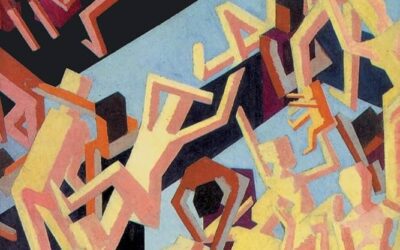
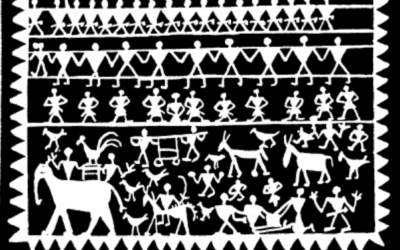

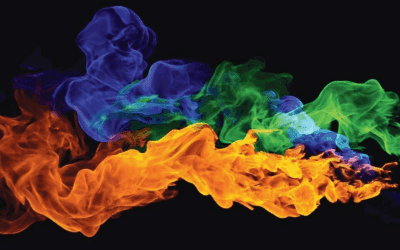

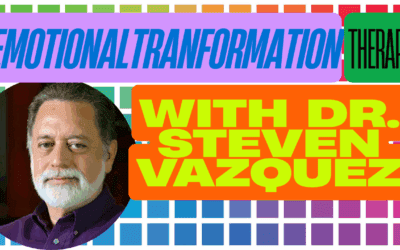
















0 Comments